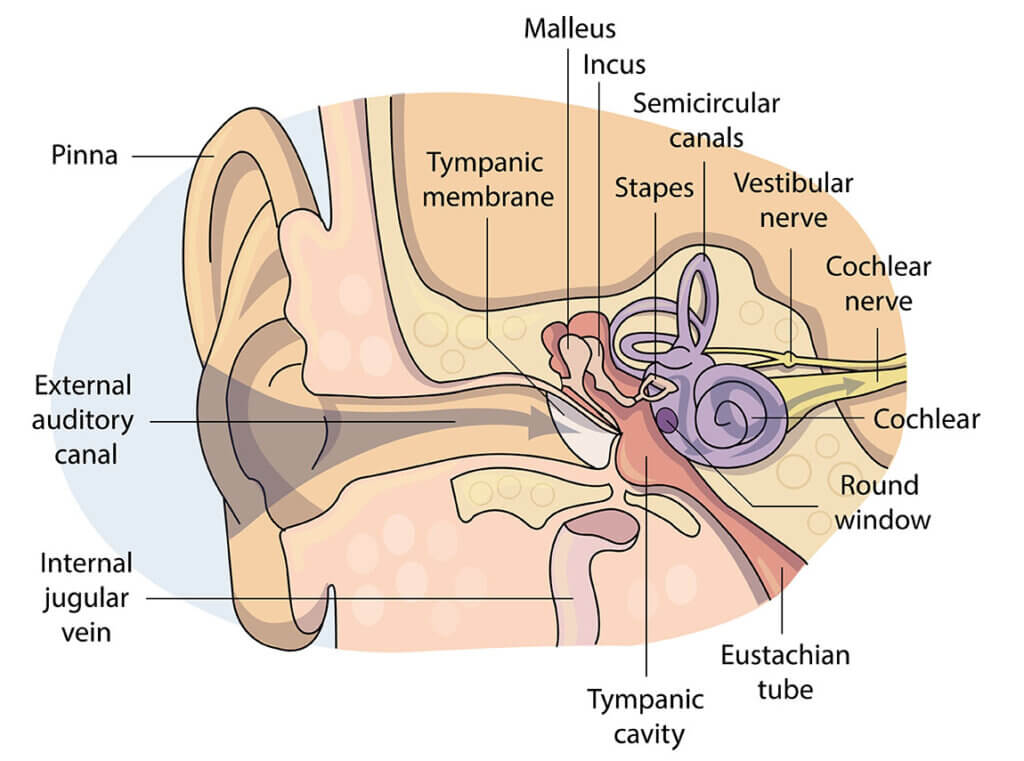
Benign Paroxysmal Positional Vertigo (BPPV)
BPPV is a peripheral vestibular disorder in the inner ear. The most common symptom of BPPV is episodes of vertigo with positional changes where the position of the head is moved against gravity. BPPV can affect anyone, however it has a higher incidence in adults above 60 years of age.
What is the Vestibular System?
The Vestibular system consists of peripheral and central systems which work together to detect changes in body movement and to orientate the body in space.
In a well-functioning system, input from the peripheral vestibular system, the proprioceptive system and the visual system is transferred to the central vestibular nuclei. The central system processes this information and creates appropriate motor commands to control eye, head and body movements to ensure the position of the body is maintained in space.
If there is dysfunction within any of these systems, this can create confusion of signals and can result in feelings of vertigo or dizziness.
Anatomy of the Inner Ear and BPPV
The peripheral vestibular system sits within the inner ear and consists of 5 sensory organs: 3 semi-circular canals (anterior, posterior and horizontal), the utricle and the saccule. Hair cells line the inside of these organs and bend in response to changes of head/body position. When this occurs a signal is sent to the central system which then processes this information and creates a motor output to adjust the body.
There are also small calcium carbonate crystals called octonia which are normally located in the utricle. These crystals can become dislodged from within the octonia and move into the semi-circular canals with this creating a heightened signal or stimulation within the canal, resulting in episodes of vertigo.
The reason why these crystals become dislodged is not always clear, but it can occur spontaneously or be due to factors including injury, infection or age-related changes.
Symptoms of BPPV
The most common symptom of BPPV is the onset of vertigo with positional changes such as rolling over in bed, getting up or lying down or tipping the head to look up or down. Other signs and symptoms which may also be present include nausea, light-headedness and altered balance. Changes in eye movement can also occur.
Assessment of BPPV
Physiotherapists will conduct a number of assessments designed to test the vestibular system. Specifically for BPPV, the Dix-Hallpike test is used. During this test, the symptoms of BPPV and movement of the eyes is monitored when the body is moved into various positions. If symptoms and altered eye movement can be provoked during this test, this indicates BPPV.

Treatment of BPPV
BPPV can spontaneously resolve, however the length of time for this to occur is unknown and variable and the symptoms will remain until it does resolve.
A physiotherapist can perform a number of treatment techniques to assist in moving the dislodged crystals out of the semi-circular canals and restoring normal stimulus within the peripheral system. The most common treatment technique is the Epley manoeuvre.
In addition to these techniques, a physiotherapist may prescribe balance and eye exercises to ensure the vestibular system, the proprioceptive system and the visual system are working in coordination to control the position and movement of the body.
